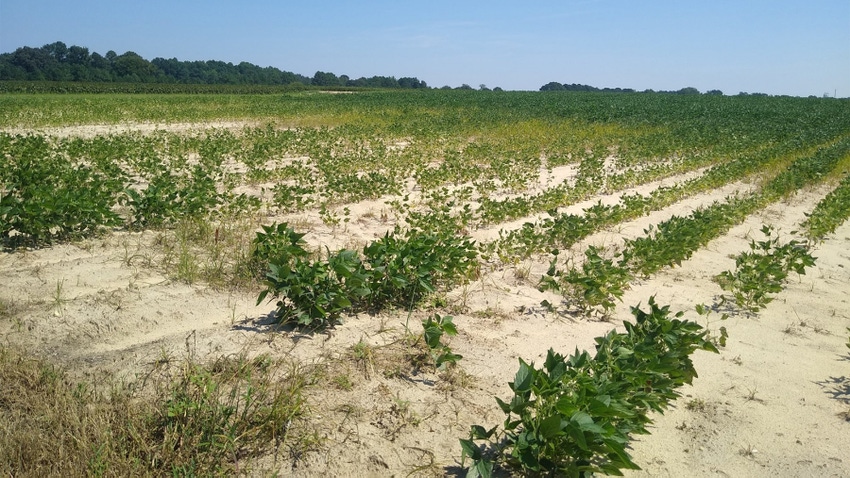
One of the most important steps in managing nematodes in soybeans is to limit the spread of the tiny creature by cleaning nematode-infected soil off equipment before moving to another field.
As Adrienne Gorny, Extension nematologist at North Carolina State University, explains, nematodes are microscopic in size and are slow movers with the ability to move a maximum of five feet per year on their own. Long-distance movement of nematodes is facilitated by people which is why cleaning tractors and equipment between locations can help limit the spread.
“For guava root knot nematode, we recommend 10% beach solution, washing off that infected soil, getting it knocked off before moving to the next location is going to reduce the risk of spreading nematodes and having them establish in new areas. Starting clean and staying clean is the best preventative measure for nematode control,” Gorny said at a Feb. 13 Soybean School at the Maxwell Center in Goldsboro.
Nematodes behave differently
Gorny said it is important to know that not all nematodes are created the same. The root-knot nematode and soybean cyst nematode are the most common and damaging nematodes in North Carolina soybeans. However, other nematodes such as the lesion nematode and sting nematode can be problematic, as well as the reniform nematode in certain parts of the state.
Gorny said it is important to scout to discover the symptoms of nematode damage to soybeans. Collecting a soil sample and submitting that sample to the North Carolina Department of Agriculture nematode assay lab is a must for nematode management.
“Collect a sample in late summer or early fall because the soil is warm, and the nematodes are actively feeding. and it makes it easier for the NCDA nematode lab to find them and count them and identify them,” Gorny said.
“Nematodes are soilborne, microscopic species that feed on the plant roots. During the season, this root damage may result in above ground symptoms that are very similar to water stress, nutrient deficiency, and other types of pathogens. We tend to be looking for poor stands, yellowing, patchiness. These could be attributed to a lot of different things, so to diagnose we really have to look below ground, looking for evidence of root galling in the case of root-knot nematode,” Gorny said.
The soybean cyst nematode is a highly pathogenic nematode and produces yellow patchy spots in the field. “Soybean cyst nematode can be diagnosed if you dig up the plant, look very closely at the root, you may see these small white to yellow blobs on the root. These are the bodies of the female nematodes. They tend to fall off the root somewhat easily, so it is best to dig up the plant rather than pulling the plant out of the ground,” Gorny said.
Using nematicides
Gorny said nematicides are needed to manage nematodes in soybeans and other crops. Since 2023, Gorny and her colleagues have evaluated several different rates of the nematicide fluopyram for nematode control at two research stations in North Carolina. The research continues this year at both locations.
At the Border Belt Tobacco Station in Whiteville, the researchers are investigating several different rates of fluopyram as well as alternative nematicides for control of the guava root-knot nematode. Gorny noted that the eight-acre site is fenced with biocontainment protocols allowing researchers to do very targeted research on soybeans and other crops without contaminating surrounding areas.
Gorny said in the first year of research, there were no statistical yield differences found among the various treatments, which surprised the researchers. She said additional research is needed to determine the efficacy of various nematicide treatments on the guava root-knot nematode.
At the Central Crops Research Station in Clayton, Gorny and her team are conducting a similar study on the efficacy of different rates of fluopyram on the sting nematode. The same protocols were used as in the Border Belt station trial, and like that trial, no statistical differences in yield were found in the various treatments.
About the Author(s)
You May Also Like






